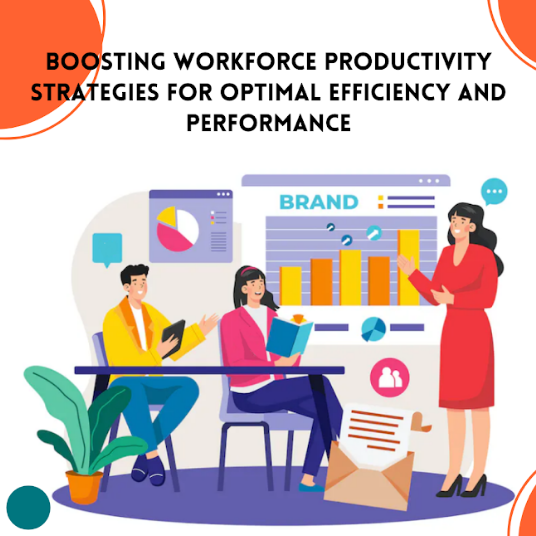Boosting Workforce Productivity Strategies for Optimal Efficiency and Performance

In today's competitive business landscape, maximizing workforce productivity is a crucial goal for organizations across industries. High productivity not only ensures efficient utilization of resources but also enhances overall performance and profitability. This blog post aims to explore strategies, techniques, and tools that can help businesses improve workforce productivity. By implementing these practices, companies can create an environment that fosters innovation, engagement, and continuous growth.
Before delving into productivity enhancement strategies, it is essential to define what workforce productivity means. Workforce productivity refers to the output of work in relation to the input of resources, such as time, effort, and capital. It measures the efficiency and effectiveness of employees and teams in achieving desired goals. Identifying Key Factors Affecting Productivity.
Understanding Workforce Productivity: To address workforce productivity, it is crucial to identify the key factors that influence it. Factors such as work environment, employee engagement, communication, skill levels, and technology all play a significant role in shaping productivity levels. Understanding these factors enables organizations to focus on the areas that require improvement.

Creating a Positive Work Culture: field staff management solution designed to optimize workforce performance and streamline operations. Powered by cutting-edge tracking technology, it provides organizations with real-time insights into their field staff's activities, location, and performance. This enables businesses to make data-driven decisions, improve resource allocation, and enhance overall productivity.
Effective Goal Setting and Performance Management: Clear and well-defined goals serve as powerful motivators for employees. This section explores strategies for setting SMART (Specific, Measurable, Achievable, Relevant, Time-bound) goals and implementing effective performance management systems. Regular feedback, performance evaluations, and performance-based incentives contribute to higher productivity levels.
Streamlining Work Processes: Efficient work processes eliminate unnecessary bottlenecks and optimize time and effort. This section discusses process improvement techniques such as workflow analysis, automation, and elimination of non-value-added tasks. It also highlights the importance of leveraging technology and productivity tools to streamline workflows.
Enhancing Employee Skills and Training: Investing in employee skills development and training programs is essential for productivity enhancement. This section explores the benefits of continuous learning, upskilling, and cross-training initiatives. By equipping employees with the necessary knowledge and skills, organizations empower them to perform at their best.
Encouraging Work-Life Balance: Maintaining a healthy work-life balance is crucial for preventing burnout and sustaining productivity in the long term. This section explores strategies for promoting work-life balance, such as flexible work arrangements, promoting self-care practices, and encouraging time off and vacations.
Leveraging Technology for Productivity: In the digital age, technology plays a pivotal role in enhancing productivity. This section discusses the benefits of leveraging productivity tools and software for project management, communication, collaboration, and task organization.
Additionally, it explores the importance of cybersecurity measures to safeguard productivity and data.
Cultivating Effective Communication: Clear and effective communication is a vital driver of productivity. This section explores strategies for improving internal communication channels, promoting transparency, and fostering active listening skills. Effective communication cultivates a shared understanding, alignment, and collaboration among team members.
Monitoring and Adjusting Strategies: The final section emphasizes the importance of monitoring productivity levels and continuously assessing the effectiveness of implemented strategies. Regular evaluation allows organizations to identify areas of improvement, adjust strategies, and adapt to evolving business needs.
Achieving and maintaining high workforce productivity requires a multifaceted approach that addresses various factors contributing to employee performance. By creating a positive work culture, setting clear goals, streamlining processes, fostering skills development, embracing technology, and encouraging work-life balance, organizations can create an environment that maximizes productivity. Remember, sustained productivity improvement is an ongoing effort that requires continuous monitoring, evaluation, and adaptation to ensure long-term success.
By implementing the strategies outlined in this blog post, businesses can empower their workforce to reach new levels of efficiency, effectiveness, and overall performance.
By leveraging TeamOB, organizations can unlock the full potential of their field teams, leading to increased productivity, enhanced customer satisfaction, and competitive advantage. Embracing this advanced solution enables businesses to stay ahead in today's rapidly evolving business landscape.
To know more about Workforce Productivity Software please, feel free to contact us. Call Us +91 9307907814